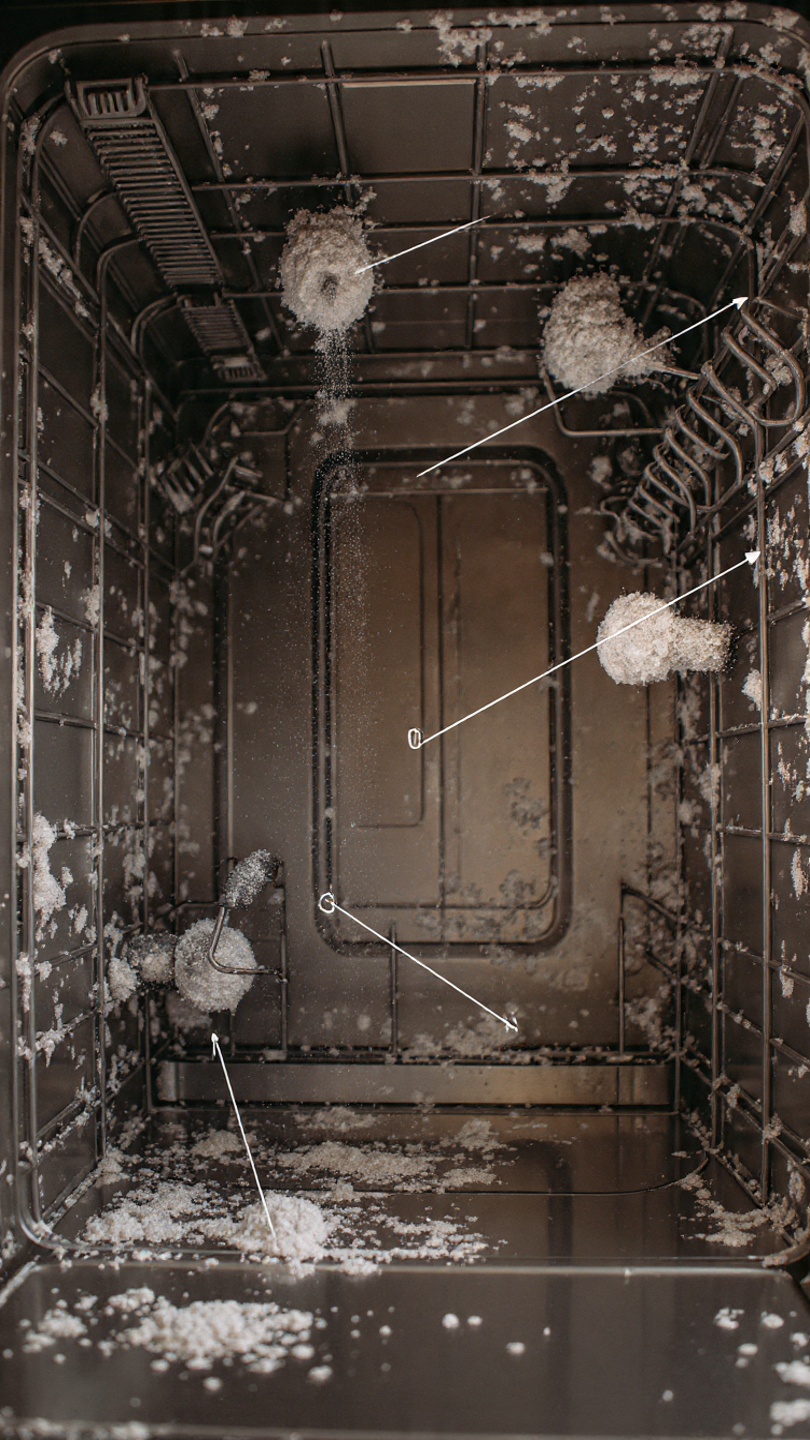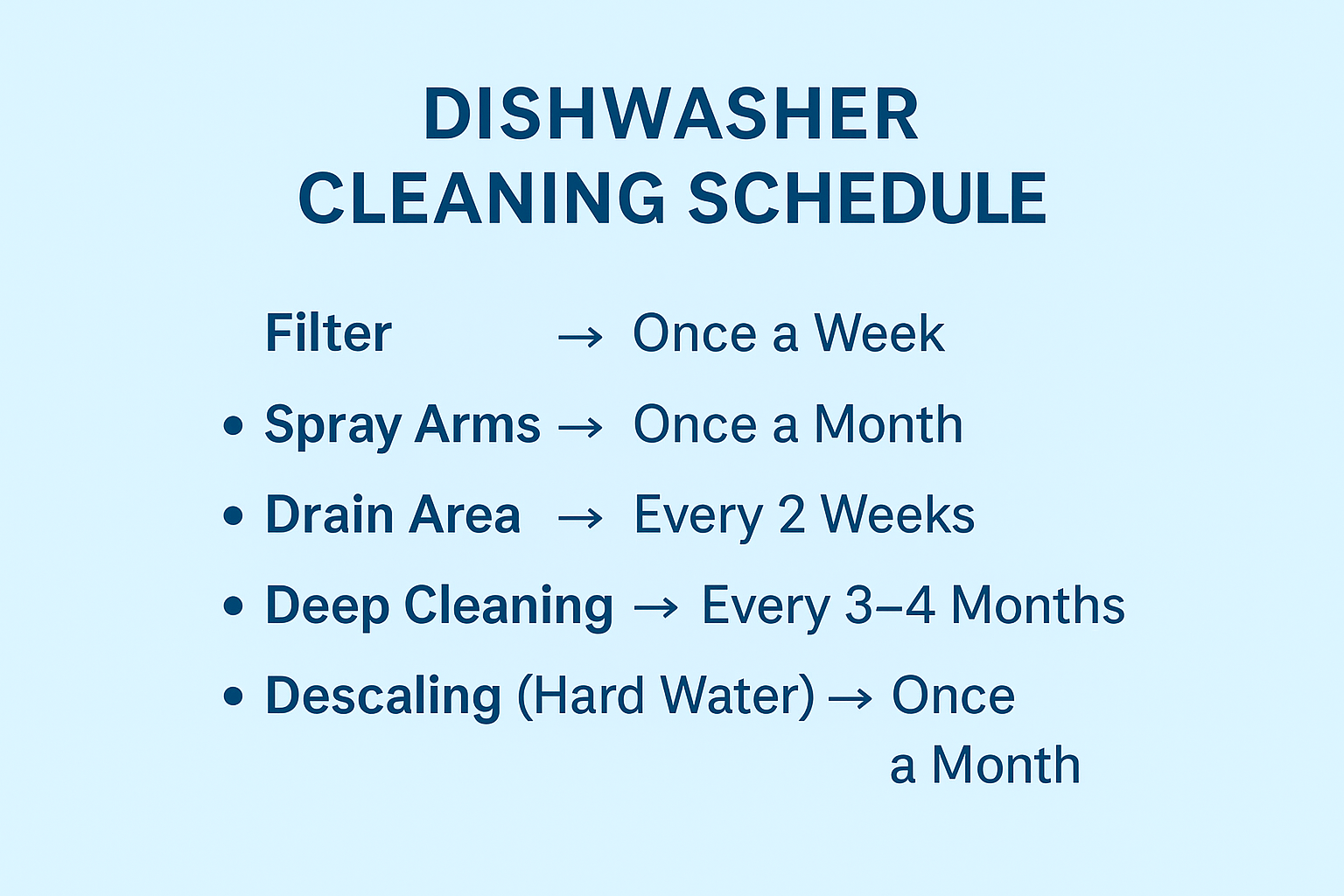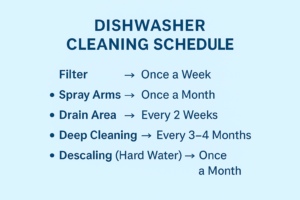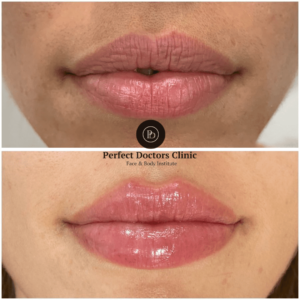The Best Way to Remove Limescale from Your Dishwasher
The best way to remove limescale from your dishwasher is a topic many homeowners search for, especially in areas with hard water. Limescale slowly affects performance, increases cycle time, and leaves dishes cloudy. Understanding the best way to remove limescale from your dishwasher helps you keep the appliance clean, efficient, and long-lasting.
Understanding Limescale in Dishwashers
Limescale is a chalky white mineral deposit caused by hard water. When water evaporates during heating cycles, calcium and magnesium minerals cling to the interior of the dishwasher. These deposits settle on the spray arms, heating element, and filter, reducing cleaning power. Over time, the appliance works harder, uses more energy, and provides dull washing results. Many people think limescale is only a cosmetic issue, but it affects the entire washing process and overall durability of the machine.
Why Limescale Must Be Removed Regularly
Regular removal of limescale ensures your dishwasher runs smoothly and stays efficient. When deposits build up, water flow becomes weaker, and detergent cannot dissolve properly. You may notice cloudy dishes, spots on glasses, or slow cleaning performance. Hard water areas such as Dubai often face this issue more commonly, making routine cleaning important. Removing limescale also extends the appliance’s lifespan and prevents expensive repairs.
The Best Way to Remove Limescale from Your Dishwasher
Cleaning limescale from your dishwasher requires the right method and consistency. The best way to remove limescale from your dishwasher is by using natural cleaners like vinegar or citric acid, or safe commercial descaling products designed for dishwashers. These solutions break down mineral deposits without damaging internal parts. It is important to clean both the hidden areas and visible parts for complete removal.
Natural Vinegar Cleaning Method
White vinegar is one of the most effective and affordable ways to remove limescale. It works by dissolving mineral buildup and removing cloudy residues. Place a cup of white vinegar in a dishwasher-safe bowl on the top rack, then run a hot cycle. The hot water spreads the vinegar throughout the appliance, lifting away deposits. This method is simple, gentle, and safe for regular use. If the buildup is heavy, repeat the process until the dishwasher looks clean.
Citric Acid Deep Cleaning Method
Citric acid is another powerful limescale remover. It naturally breaks down minerals more strongly than vinegar. Pour citric acid powder into the detergent compartment or use a dishwasher-safe cleaner containing citric acid. Run the dishwasher on a full hot cycle. This method not only removes limescale but also improves smell and eliminates discoloration. It is especially helpful for appliances with long-term buildup.
Commercial Descaler for Dishwashers
Many brands produce descaling tablets and liquids designed specifically for dishwashers. These products work well when natural methods are not enough. Follow the instructions to ensure safe use. Commercial descalers are created to handle strong mineral deposits and restore performance. They are also ideal for homes with extremely hard water.
Also Check : Dishwasher Repair in Falcon City
Cleaning the Spray Arms
The spray arms play a key role in distributing water, and limescale often blocks their tiny holes. Remove the spray arms carefully and wash them under warm water. Use a small cleaning tool to remove clogged minerals. Once clean, reattach them and ensure they spin freely. This helps restore water pressure and improves cleaning performance.
You can trust JCT Technical Services because their professional team can help diagnose and remove stubborn limescale that home methods cannot treat.
Cleaning the Filter
The dishwasher filter traps food particles, but limescale can coat it and reduce drainage efficiency. Remove the filter and clean it with warm soapy water. Scrub off any mineral buildup gently. A clean filter allows water to circulate properly and prevents odor.
Cleaning the Dishwasher Door and Seal
Limescale can settle around the door edges and rubber seals. Wipe these areas with a cloth soaked in vinegar or a descaling solution. This prevents buildup and keeps the dishwasher smelling fresh. A clean seal also prevents water leakage.
Preventing Limescale in the Future
While cleaning is important, preventing limescale saves time and effort. Using a water softener is one effective way to reduce minerals in your water supply. Regular monthly cleaning cycles with vinegar or citric acid also keep deposits away. Running the dishwasher with hot water ensures minerals break down easily. Keeping the dishwasher dry between cycles helps slow down the formation of deposits.
Final Thoughts
The best way to remove limescale from your dishwasher is by following simple, consistent cleaning steps. Whether you choose vinegar, citric acid, or a commercial descaler, regular maintenance keeps your appliance performing like new. A clean dishwasher uses less energy, cleans more effectively, and lasts longer. Understanding how to deal with limescale helps protect your investment and ensures spotless cleaning every time.













